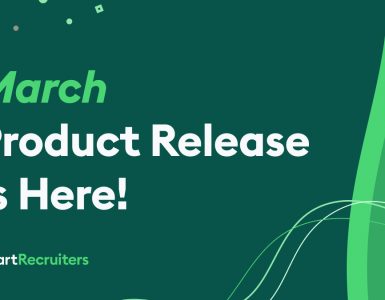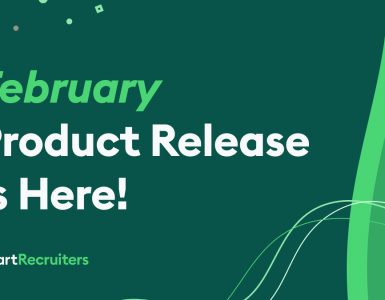Our Global Director of Sales and Development Taft Love shares what his ideal day for an SDR looks like with the Predictable Revenue Podcast. Watch below!
If there’s one overarching theme – one consistent narrative – to The Predictable Revenue Podcast, it’s how sales leaders are working to make the practice of sales development more focused, effective and ultimately lucrative.
Some are focused on perfecting the email. Others, the cold call. Still, some are keenly looking at prospecting and sourcing new leads. But, regardless of their specialty or niche, the end goal remains the same: how do we improve this fundamental business process.
And Taft Love, SmartRecruiter’s Global Director of Sales Development, is no exception to that rule. In fact, Love says his goal these days, from a macro perspective, is bridging the gap between the idealized perfect SDR day and the often routine, difficult reality of the job.
I find that anytime I talk to sales leaders, sales development mimics startups in general: everyone is killing it. When I talk to other sales development leaders – you don’t hear about the real problems,” says Love, on a recent edition of The Predictable Revenue Podcast.
But, of course, there are a lot of problems that plague you. So, early on at SmartRecruiters, I wanted to bridge the gap between the perfect SDR day and reality – get them as close together as possible.
A massive undertaking, by all accounts. But what does that “bridging the gap” look like on a day to day basis?
For Love, it begins with stripping away as manual tasks as possible, so each SDR can focus entirely on selling.
A goal that every leader should have is to strip away any task that isn’t related to selling,” says Love.
We just strip that manual work away. That’s the first goal. Then, build an operation around what they are doing. You need to operationalize what’s left. This is important because sometimes you are dealing with less experienced folks. They are hard working and mean well – but need some guidance from time to time. Operationalizing is something we’re really focused on.
At SmartRecruiters, operationalizing an SDRs tasks begins with Salesforce. In fact, it begins and ends with Salesforce.
According to Love, sales leadership at SmartRecruiter wanted to limit their SDRs work to one screen. So, they integrated Salesforce with their email sending tool (Outreach) and began working almost entirely out of Salesforce.
For example, SDRs at SmartRecruiter add all of their research, update company information in Salesforce. But SDRs can also merge customizations from Salesforce into their prospecting emails because Salesforce is integrated with their email sending tool. That means one-off sentences, or any custom messaging an SDR wants to include in their emails can be done right from the contact record screen.
Once an SDR inputs the information required, they can trigger a cadence to begin right from Salesforce.
The account view, on the other hand, is used for keeping track of past activities (past prospecting) on various accounts, as well as where SDRs choose to make an account a target for some new prospecting.
To keep track of past prospecting, SmartRecruiters designed a field called “roll-ups,” which Love says is a safeguard against stepping on people’s toes.
It’s an SDRs responsibility to research the account and look through the contacts,” says Love.
If you have an account with 20 contacts and marketing has sent them literally 100 emails over the last couple years, it can be really tough to figure out is a salesperson has been or is working this. So, the roll-ups were our answer to that.
Of course, there are other dangers to SDRs working exclusively in Salesforce, and not, for instance, in your email sending tool. For example, you have to be very thorough with your data inputs. If you’re not paying attention your emails won’t launch.
The danger of working exclusively out of Salesforce is that you may not realize until the next day that you forgot to fill in all of the required values and therefore your sequence failed,” says Love.
The way we deal with that is that we require you fill everything in in SF, or you can’t save a record.
Moreover, if an SDR at SmartRecruiters chooses to launch a specific sequence (cadence) in Salesforce, but hasn’t made the account they want to prospect to a “target account” then they will get an error message preventing them for beginning prospecting.
(The error message is the result of a validation rule that wasn’t fulfilled – i.e. not making the prospect a target account).
Another safeguard Smartrecruiters put in place is making sure that prospects don’t get immediately re-prospected to after running through a sequence of emails and calls. Because a prospect record is filled out entirely in Salesforce, and then immediately placed into a sequence from there, the required fields that placed them in a sequence never change.
But, as any SDR will tell you, a prospect can be taken out of a sequence at any given time – for any number of reasons. So, how do you make sure Salesforce doesn’t automatically send that prospect back into a sequence of emails?
SmartRecruiters built a workflow rule that will automatically uncheck the required boxes on prospects Salesforce record after the prospect is removed from a sequence.
Well, definitely where we pissed a few people off – we forgot to uncheck the boxes,” says Love, with a laugh.
So… what’s next?
SmartRecruiters has done a great job stripping away manual tasks, and given their SDRs one screen to work from, limiting the jumping around from tab to tab that plagues many SDRs. But, surely there’s more to do, right?
Love says the next frontier is figuring out how to automatically, without relying on human judgment, determine the sentiment of an email.
Reply rate and success rate aren’t the same thing. At scale, how do you figure out how successful the email portion of outreach is? Says Love.
Until AI (artificial intelligence) can determine accurately the sentiment of an email, a human is going to have to look at it and mark it as a success. But humans are subjective. So, how we do we make it as objective as possible? This is what they are working on right now.
For more on Taft Love’s Salesforce process, check out this edition of The Predictable Revenue Podcast (our site), iTunes, or Youtube.
Article originally published on Predicatable Revenue and updated November 26th, 2017.






